#Infundibulicybe geotropa
Text

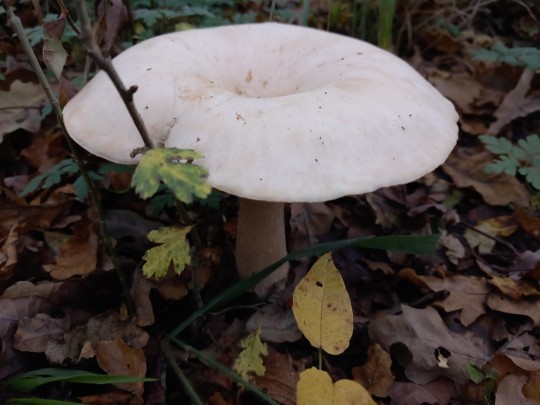


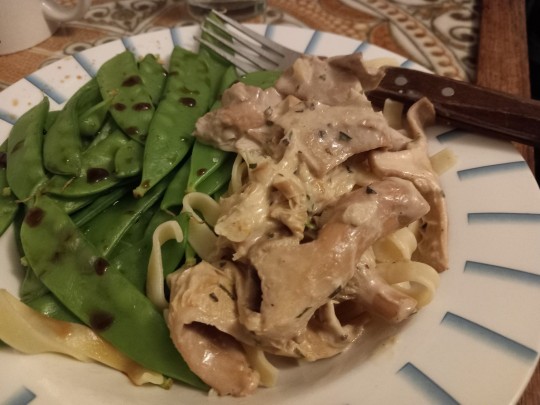
Cambridgeshire, UK, November 2023
Trooping funnels (Infundibulicybe geotropa)
These lovely fungi are substantial and delicious, and often found in large numbers, making them an excellent one to look out for in autumn and well into winter.
We found these while out walking with a couple of friends who wanted to get into mushroom hunting, and they were very pleased with the find, including the find of the 'baby' funnels at the base of the larger ones!
Care should be taken to distinguish these fungi from the livid pinkgill (Entoloma sinuatum), a quite severely poisonous (though rarely deadly) mushroom. Luckily, along with some other distinguishing features, trooping funnels have a white spore print, while the livid pinkgill's is, predictably, pink, meaning they can easily be ruled out with certainty.
I made these into a creamy tarragon pasta sauce, delicious.
#fungi#foraging#mushroom hunting#edible fungi#food#vegan#trooping funnel#funnels#funnel mushrooms#Infundibulicybe geotropa#Infundibulicybe#potential confusions
41 notes
·
View notes
Photo
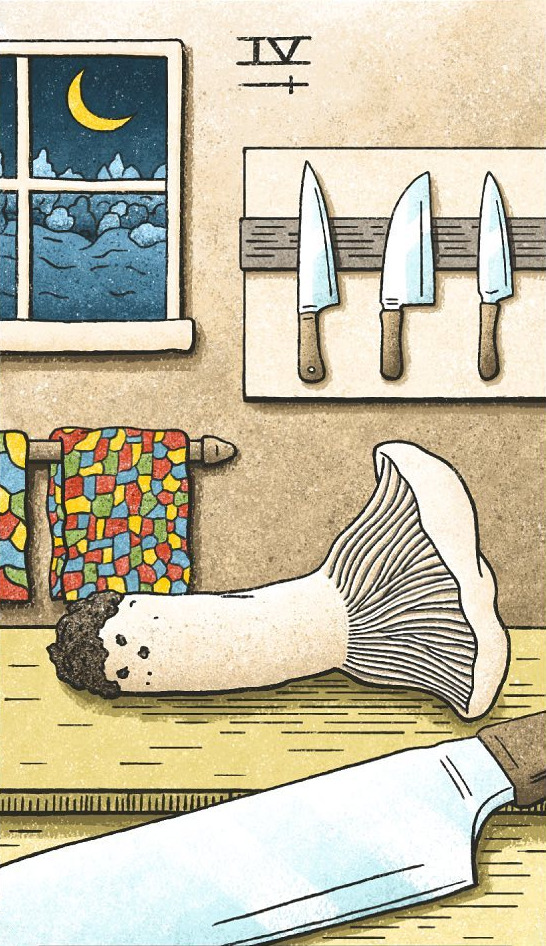
Four of Swords. Art by Joseph Buckley, from The Mushroom Hunter's Tarot.
The monk’s head mushroom (Infundibulicybe geotropa), common in Europe, is one of the few mushrooms able to endure the first frosts of winter. Though edible and popular in Italy for its inclusion in stews and frittatas, the monk’s head mushroom may easily be mistaken for Clitocybe amoenolens, also known as the paralysis funnel. What a perfect reminder that while it’s important to take the time to rest and contemplate like a monk, be careful not to paralyze yourself in stagnation for too long.
Keywords: Rest, meditation, sanctuary, spiritual counseling
#Joseph Buckley#The Mushroom Hunter's Tarot#Four of Swords#Four#Swords#Minor Arcana#Tarot#Mushrooms#Monk's Head Mushroom
103 notes
·
View notes
Text
Infundibulicybe geotropa o Platera
Si desconoces este nombre es por una razón: no eres aficionado a los hongos. Porque los micólogos admiran profundamente a... http://dlvr.it/T4l3cR
0 notes
Text
Trooping Funnel #fungus
Infundibulicybe geotropa.
Picture taken on November 27.
#troopingfunnel #nature #naturephotography #woods #mushroom #fungi #mushrooms

View On WordPress
1 note
·
View note
Photo
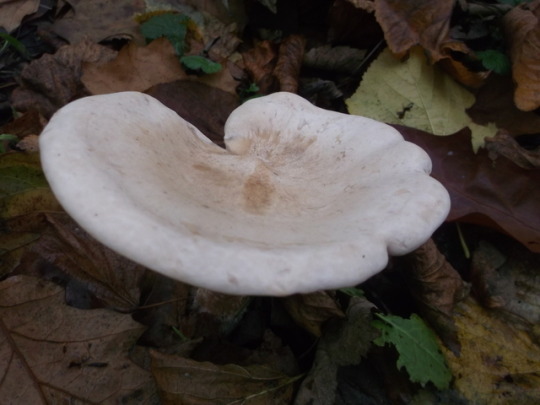

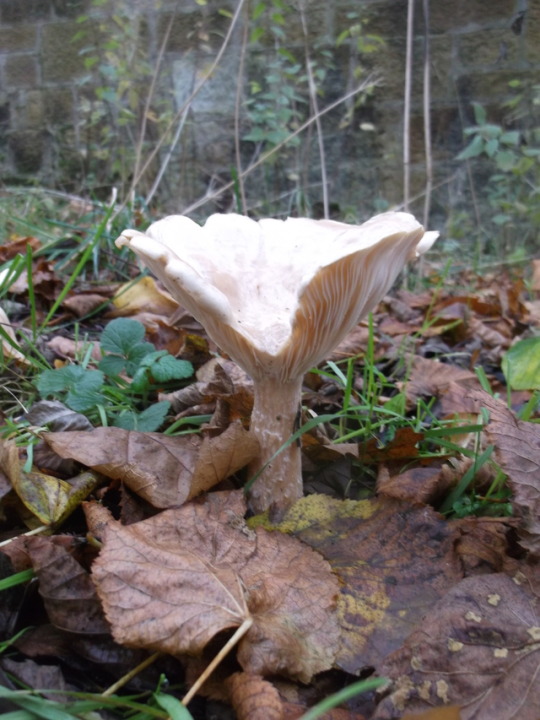

Monk’s head mushroom (Infundibulicybe geotropa) as identified by the nice people over at r/mycology on reddit.
4 notes
·
View notes
Text
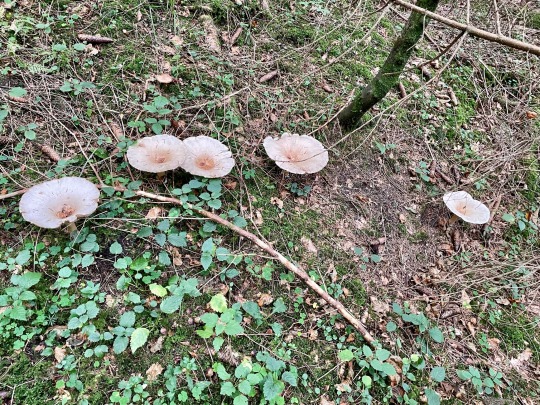

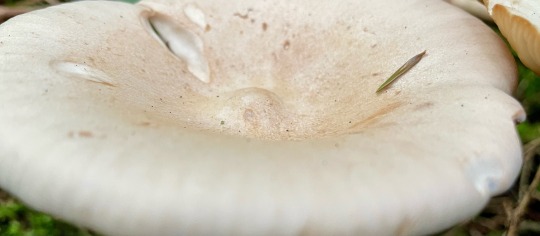
Mönchskopf, infundibulicybe geotropa 03.10.21
#mushrooms#pilze#fungi#mycology#basidiomycota#pilz#wild fungi#pilzesuchen#mushrooms switzerland#mushrooms of switzerland#infundibulicybe
6 notes
·
View notes
Photo

mushroomy warmup sketched Chlorophyllum moldybites Infundibulicybe geotropa Morchella conica referenced from wikimedia images #sketchbook #illustration #art #artistsoninstagram #mycology #mushroom
1 note
·
View note
Text
I FUNGHI OTTIMO COMMESTIBILI: non solo porcini...
C'è una spasmodica sopravvalutazione di un fungo sopra ogni altro: il porcino. Da molti considerato "il Fungo" e sovente raccolto in modo esclusivo. Questo atteggiamento che va a privilegiare una singola parte su ogni altra lo chiamo "il feticismo del porcino". Come mai il porcino (Boletus Edulis, Aereus, Aestivalis, Pinophilus) ha trionfato su ogni altro fungo ottimo commestibile? A mio avviso ci sono due risposte: la prima è che è un fungo che può essere conservato in qualsiasi modo (congelato crudo o precotto, seccato, sott'olio, sotto aceto) ed è altrettanto versatile in cucina. Questo gli ha quindi permesso di essere premiato dalla tradizione. Inoltre, è il fungo più "soddisfacente" da raccogliere, assieme ai chiodini, perché è di bell'aspetto: tozzo, massiccio, rotondo, ma anche di bel portamento.
Tuttavia, esistono funghi ottimo commestibili pari o addirittura migliori rispetto al porcino! Essi sono:
Finferli (Cantharellus Cibarius, Amethysteus, Pallens)
Amanita Cesarea
Morchella Esculenta
Infundibulicybe Geotropa
Hygrophorus Marzuolus
Cyclocybe cylindracea (pioppino)
Craterellus Cornucopioides e Lutescens
Armillaria Mellea
Kuehneromices Mutabilis
Marasmius oreades
Coprinus comatus
Si potrebbero anche menzionare l'Hygrophorus Russula (lardaioli) o anche la Calocybe Gambosa (prugnoli). Ma anche il Tricholoma Portentosum e Terreum. Ovviamente nessuno di questi funghi ha la stessa versatilità gastronomica né la stessa adattabilità alle modalità di conservazione che detiene il porcino. Tuttavia, ciò non toglie che i funghi finora menzionati siano tutti pregiati cioè ottimo commestibili. Poi si apre il capitolo dei funghi "da misto", cioè specie che da sole sarebbero un po' sacrificate ma unite ad altre specie costituiscono delle prelibatezze uniche! Potremmo citare la Russula Cyanoxantha, Hydnum Repandum (steccherino dorato), Clitopilus Prunulus, Paralepista Flaccida, Infundibulicybe Gibba, Pleurotus Ostreatus, Macrolepiota Procera, Agaricus Augustus, Russula Virescens, Russula Aurata, Boletus Erythropus, Lactarius Deliciosus e altri ancora, come tutte le numerose varietà di Leccinum (porcinello)...
A conti fatti abbiamo 18 specie di funghi pregiati (senza contare le 4 specie di boleti detti porcini!) e almeno altre 12 molto buone per il misto o per preparazioni sott'olio...
Perciò ha davvero poco senso girare nei boschi avendo in mente soltanto i porcini, né ha senso avventurarsi nei boschi solo d'autunno (le morchelle ad esempio sono primaverili, come i prugnoli, i marzaioli sono invernali, i pioppini vengono anche in primavera così come, talvolta, i finferli). Dopodiché, l'ingoranza avvantaggia chi ha una conoscenza dei funghi elementare o addirittura intermedia o avanzata, poiché dimimuisce i "competitors"... sebbene crei una pressione eccessiva su una o due specie!
0 notes